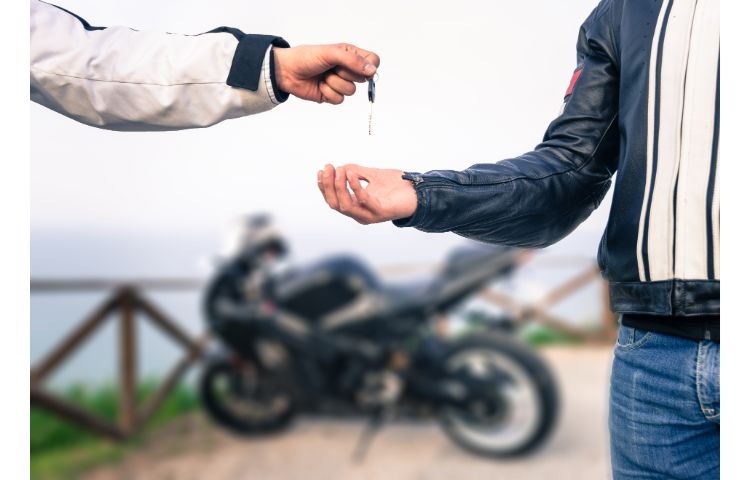In 2020, the number of registered two-wheelers on Indian roads stood at 2,43,682. The number goes to show how popular two-wheelers are. It is mostly because of their efficiency and ease of motility through traffic-congested roads. It is what makes them more prone to accidents.
On average, about 1,50,000 people die annually due to road accidents in India. These alarming statistics of death rates due to road accidents emphasise the importance of following traffic rules, especially for two-wheeler riders.
In many cases, these accidents lead to various personal injuries, property damages and other financial and legal consequences.
However, one way to deal with the financial and legal consequences is by having proper comprehensive or third party bike insurance. And another is following the proper traffic guidelines can save riders’ lives and other road users. Thus, this article will explore some crucial two-wheeler traffic rules to ensure a safe ride on Indian roads.
Important Traffic Rules For Bikes or Two-Wheelers In India
1. Always Wear a Helmet
First and foremost, the safety of two-wheeler riders is wearing a helmet. Most people wear helmets to save themselves from the fines. But to ensure safety, invest in the best ISO (International Organisation for Standardisation )certified helmets that fit properly. It will help protect the head and brain from severe injuries during accidents and significantly reduce the risk of fatalities.
2. Follow Traffic Signals and Signs
The other basic traffic rule for two-wheelers is following all traffic signals and road signs is essential for ensuring safety and maintaining a smooth traffic flow. However, ignoring these signals can cause accidents and damage you and other road users. Further, you may be entitled to punishment due to traffic violations or have to pay hefty fines.
3. Carry Driving License and Bike Insurance
To ride a bike on Indian roads, riders must carry a valid driving licence and bike insurance policy. Failing to carry valid insurance can lead to fines and legal consequences. And supposedly, if you have the Honda Activa, then having Honda Activa insurance from reliable companies like Tata AIG provides financial protection in unforeseen events that may damage the bike or third-party liabilities.
4. Stay within Speed Limits
Speeding is one of the major causes that account for 60% of road accidents in India. Thus, it is essential to always adhere to the specified speed limits in different areas. Lowering your speed in congested areas allows you to respond quickly to unexpected situations and potential hazards.
5. Use Indicators and Rearview Mirrors
Using the proper indicators and rearview mirrors will help you to understand the intention of the other road users and reflect yours to them. Using the left or right indicators helps the other road user to know that you will turn left or right. Also, regularly check your rearview mirrors to stay aware of vehicles approaching from behind and avoid sudden lane changes or turns.
6. Avoid Trippling
According to the bike traffic rules in India, only two people are allowed on the bike — one is a rider, and one pillion (passenger) is seated behind the rider. And in some regions, there is an exception for carrying children below a certain age.
7. Avoid Overtaking in Dangerous Spots
If you want to overtake any vehicle, you should be extra careful with it. Avoid overtaking from the left side, dangerous curves, and near intersections. Ensure you are using indicators to alert other road users and there is sufficient space and visibility to overtake safely.
8. Maintain Safe Following Distance
Maintaining a safe following distance from the vehicle in front is one of the crucial aspects of avoiding collisions in case of sudden braking. Generally, keep at least a two-second gap between your two-wheeler and the vehicle ahead. Also, ensure that in weather, like in the monsoon, increase your following distance as there is more chance of slipping.
9. Be Visible at Night
Mostly at night, the chances of accidents increase due to the lesser visibility of two-wheelers. Thus, ensure you are using the headlights, taillights, and indicators properly. Also, you can wear reflective clothing or stickers to your helmet and vehicle to make yourself more noticeable during low-light conditions.
10. Be Mindful of Road Conditions
Indian roads can vary greatly in quality and condition. Thus, it is essential to be extra careful towards speed breakers, potholes, loose stones or pebbles that may cause accidents. Adjust your speed and riding style according to the road conditions.
Conclusion
Following traffic rules for two-wheelers is not only a legal obligation to save your life and the lives of other road users. Thus, by adhering to this rule, you can ensure proper safety measures and create a safer road environment for everyone in India.



